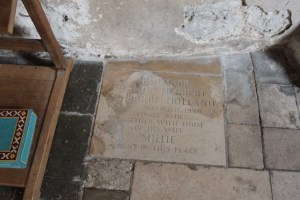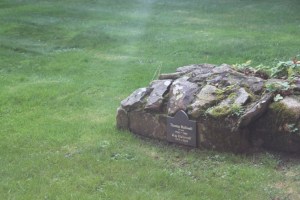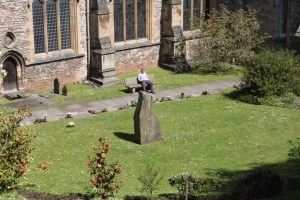From Howard’s Archaeodeath blog.
As part of Strand 1 of the Past in its Place project – Speaking with the Dead – I am writing (with my PhD student Ruth Nugent about cremation and cathedrals) in England and Wales.
In considering cathedrals as environments for ongoing literary and material engagements between the living and the dead, it would be easy to dismiss the last 150 years as a time of commemorative decline. Scholarship on monuments and memorials bears out this impression. After all, the vast majority of scholarly research on cathedral memorials has focused on medieval shrines and effigies, early modern mural monuments, and sometimes the grandiose edifices of Victorian clergy.
Our research suggests the contrary. By looking at a sample of English and Welsh cathedrals to reveal wider trends and practices in cathedral commemoration, the Speaking with the Dead project has identified that cathedrals have sustained and adapted themselves as nodes in a complex topography for remembering the dead. While burial in cathedrals has all but ceased in the late 19th century, cenotaphs to bodies interred elsewhere, and memorials to the cremated dead, persist as key dimensions of how cathedrals operate as places of memory. Furthermore, the ashes of the cremated dead have, during the 20th century, increasingly reached into cathedral commemorative environments long denied to unburned cadavers following Victorian legislation against intramural and inner-city burial.
While lengthy, eloquent epitaphs are all but absent, this memorial tradition remains textual, in an abrupt, formulaic and thus powerful and conservative fashion. Furthermore, these memorials gain their significance both individually and collectively, through their integration into the pre-existing fabric of medieval buildings and their surroundings. Memorials to the cremated dead also gain significance through their close association and reuse of far older aisles, chapels, monuments and memorials: often place side-by-side with the tombs of medieval bishops and Jacobean aristocrats.
How are the cremated dead memorialised through materials, texts and spaces in and around the modern cathedral?
- Churches and cathedrals have a long tradition of cenotaphic memorialisation since the Middle Ages, with memorials situated on/in walls, windows, floors and fittings (such as pews and lecterns) displaced from the bodies subject to commemoration. In many ways, memorials to the cremated dead are incorporated into this long tradition of memorialisation without the body that persists to the present day

- Long before cremation came back into fashion, cremation was implied in cathedral architecture from the late sixteenth century through to the nineteenth century. Mural monuments to aristocrats, and later regimental and war memorials, depict the hero’s tomb, flaming urns articulating the ascension of the soul to Heaven, lidded urns implying the idea of ashes therein, and torches used in antiquity to ignite funerary pyres.
- Since the late 19th century, memorials to burials in cathedrals become exceptional, yet memorials to bodies and ashes interred elsewhere persist. Many of the memorials in cathedrals allude indirectly to individuals who were cremated upon death. Only upon rare occasions is there an explicit reference to the memorialisation of ashes interred elsewhere.
- As cremation rose in popularity during the 20th century, interments of ashes for those closely connected to the cathedral were permitted beneath floor surfaces. In rare cases, this is made explicit in the text of the memorial, but far more often it is implied by the small size of the memorial and its location.
- During the twentieth centuries, burial grounds within cloister gardens either persisted, or were reused, to receive the interment and/or scattering of ashes. The walls and windows of cloisters continued to receive memorials to those whose ashes were scattered or interred therein, adapting a long existing cenotaphic memorial tradition.
- Both the long-defunct and still-operational burial grounds around cathedrals have been revitalised as spaces for ash dispersal, interment through burial plots and gardens of remembrance.
- Cathedrals are almost always situated in close proximity to one or more suburban cemeteries and crematoria built during the late 19th, early 20th or (most often) late 20th centuries. The funerals and memorial notable individuals and military groups have linked these spaces together.
In summary, despite the traditional ambivalence of many sections of Anglicanism to the rise of cremation, the disposal of the dead by fire has had a long-term impact, as idea and reality, on the commemoration of the cathedral dead since the early modern period and in particular during the 20th and early 21st centuries.





